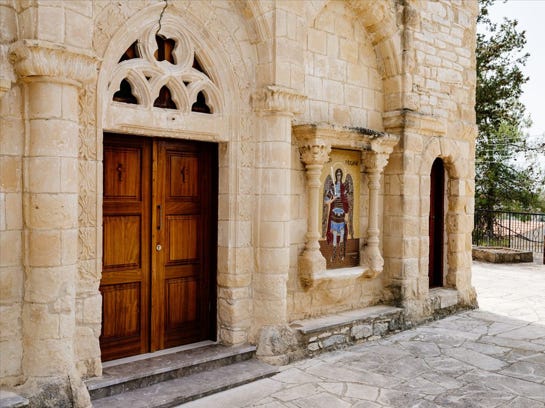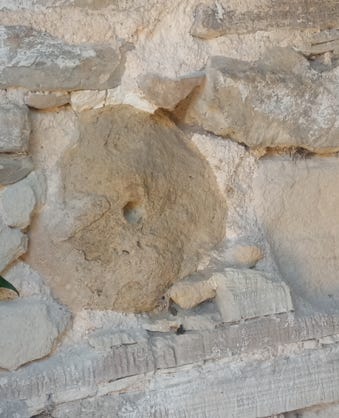The Stone, St Michael, and the Demons of Demona
Buried in the wall of an inconsequential stone building, unnoticed and unremarked for generations, is a large, roughly hewn, spherical stone. It looks out of place from all the rectangular stones surrounding it. The fabric of the building is old, though it has evidently been rebuilt at some indeterminate point in the past.
Above the arched entrance door, a date of 1930 has been crudely carved into the stonework, yet the reconstructed building is evidently far older than this. Inside, typical of a number of the more affluent older palati (palace) style stone buildings in the Paphos region of western Cyprus, is a camara or large stone arch. Centrally located, it supports the ceiling beams. It was designed to overcome the limitations in length of available timber and thereby created a larger internal area. The style of construction dates back at least to the Middle Ages. Similar constructions can be found in surviving medieval French domestic buildings.
In the building in question it is evident that the internal camara has been reconstructed at some point. The original building had evidently suffered a major collapse. The lower stone work of the camara has been exposed and weathered by wind and rain for many years leading to erosion of the surfaces, whilst the upper section of the arch was subsequently reconstructed at some point with the original stones which, though damaged, have not been weathered indicating thereby that a collapse of the original earthen roof would have left them buried under the debris and protected them from the elements.
The round stone embedded in the outer wall is none other than a cannonball. No written record exists as to how the cannonball got there. It is known that stone cannonballs were once the admired tour de force of the Ottoman Empire.





